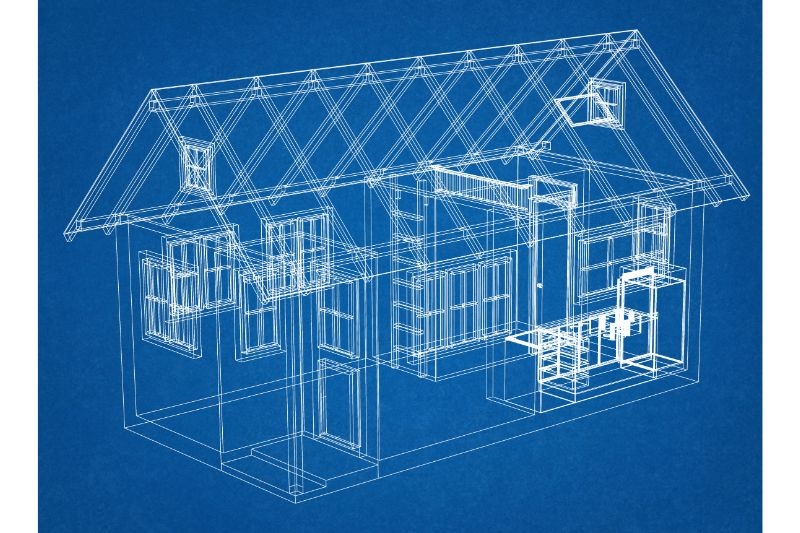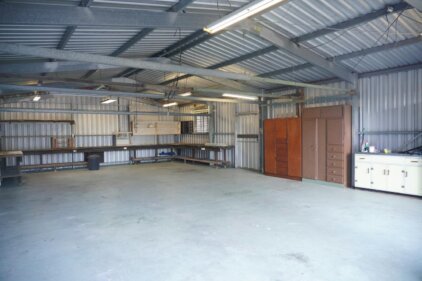Introduction to the Tiny House Movement
Living in a tiny house has become a popular lifestyle choice for many people in the UK. The Tiny House Movement, which originated in the United States, is a growing trend that has captured the imagination of those seeking a simpler, more sustainable way of life. In this article, I will explore the history and origins of the Tiny House Movement, discuss the benefits of living in a tiny house, showcase examples of innovative space-saving solutions, provide tips on designing and building your own tiny house, address the challenges and limitations of tiny house living, examine the environmental impact of the movement, discuss the legal considerations in the UK, and speculate on the future of the Tiny House Movement in the country.
The History and Origins of the Tiny House Movement
The Tiny House Movement can be traced back to the 1970s, when architect Lester Walker published a book titled „Tiny Houses: Or How to Get Away From It All.” However, it wasn’t until the early 2000s that the movement gained significant momentum. The housing crisis, coupled with a growing interest in minimalism and sustainable living, propelled the Tiny House Movement into the mainstream.
Benefits of Living in a Tiny House
Living in a tiny house offers a multitude of benefits. Firstly, it allows for a simpler and more affordable lifestyle. With a smaller living space, there is less space to fill with unnecessary belongings, leading to reduced consumption and expenses. Additionally, the reduced size of a tiny house often means lower utility bills. Moreover, tiny houses are mobile, allowing homeowners to embrace a nomadic lifestyle or move to different locations without the burdens of traditional home ownership.
In addition to the financial advantages, living in a tiny house promotes a more environmentally friendly way of life. With a smaller ecological footprint, tiny house owners contribute less to waste production and energy consumption. Furthermore, the limited space encourages individuals to be mindful of their consumption habits and make conscious choices about the materials and resources they use.
Examples of Innovative Space-Saving Solutions in Tiny Houses
One of the most fascinating aspects of the Tiny House Movement is the innovative space-saving solutions employed in these compact homes. From cleverly designed storage solutions to multi-functional furniture pieces, tiny house owners have embraced creativity to maximize the use of limited space. For example, loft beds and staircases with built-in storage compartments help optimize vertical space. Foldable tables and chairs allow for flexibility in dining and entertaining. Wall-mounted shelves and hooks make use of vertical wall space for storage.
How to Design and Build Your Own Tiny House
Designing and building your own tiny house can be an exciting and fulfilling endeavor. Before embarking on this journey, it’s essential to carefully plan and consider your needs and priorities. Start by determining the size and layout that will best suit your lifestyle. Research and gather inspiration from existing tiny house designs, taking note of features that resonate with you. Consider consulting with an architect or experienced tiny house builder to ensure your design is structurally sound and meets building regulations.
Next, create a budget and timeline for your project. It’s important to be realistic about costs and allow for unexpected expenses. Gather the necessary materials and tools, and consider enlisting the help of friends or professionals for certain aspects of the construction process. Remember to prioritize energy efficiency and sustainability in your design choices, as these are core principles of the Tiny House Movement.
Challenges and Limitations of Living in a Tiny House
While living in a tiny house offers numerous benefits, there are also challenges and limitations to consider. Limited space can make it difficult to entertain guests or accommodate visitors. Storage space is often at a premium, requiring careful organization and minimal possessions. Additionally, adjusting to a smaller living space can be a significant change, especially for individuals accustomed to more spacious accommodations.
Another challenge is finding suitable locations to park or place a tiny house. In the UK, there are legal considerations and restrictions regarding where tiny houses can be situated. Zoning laws, planning permissions, and local regulations must be carefully navigated to ensure compliance and avoid potential legal issues.
The Environmental Impact of the Tiny House Movement
The Tiny House Movement is often celebrated for its positive environmental impact. With smaller homes, there is a reduced need for construction materials, resulting in less waste and resource consumption. Moreover, tiny houses typically require less energy for heating and cooling due to their compact size. This contributes to a lower carbon footprint and reduced energy consumption.
Furthermore, the Tiny House Movement encourages sustainable living practices. Many tiny house owners adopt eco-friendly technologies such as solar panels, rainwater harvesting systems, and composting toilets. These choices promote self-sufficiency and minimize reliance on traditional utilities. By embracing a simpler and more sustainable lifestyle, tiny house owners are making a positive impact on the environment.
The Legal Considerations of Living in a Tiny House in the UK
Living in a tiny house in the UK brings forth legal considerations that must be carefully addressed. Unlike traditional homes, tiny houses often fall into a regulatory gray area. Planning permissions, building regulations, and zoning laws vary across different regions, making it crucial to research and understand the legal requirements before embarking on a tiny house project. Some local authorities may view tiny houses as caravans or mobile homes, while others may have specific regulations for accessory dwellings.
It’s essential to consult with local authorities and seek legal advice to ensure compliance with relevant regulations. Additionally, it’s important to consider the availability of suitable land to park or place a tiny house. Finding a location that allows for tiny house living within legal boundaries can be challenging but not impossible. Engaging with the tiny house community and networking with like-minded individuals can help navigate the legal landscape and identify suitable options.
The Future of the Tiny House Movement in the UK
As the housing crisis continues to escalate and the desire for more sustainable living options grows, the future of the Tiny House Movement in the UK appears promising. The demand for affordable housing solutions and the appeal of a simpler, more sustainable lifestyle continue to drive interest in tiny houses. However, the movement’s growth may be influenced by evolving regulations and attitudes towards alternative housing options. Continued advocacy, education, and collaboration between the tiny house community and policymakers will play a crucial role in shaping the future of the movement in the UK.
Conclusion
The Tiny House Movement offers a compelling alternative to traditional housing, providing a path towards a simpler, more sustainable way of life. From the history and origins of the movement to the benefits and challenges of tiny house living, there is much to explore and consider. As the movement gains traction in the UK, it is essential to navigate the legal landscape and embrace innovative space-saving solutions. By embracing the art of minimalist living and revolutionary space-saving solutions, the Tiny House Movement in the UK has the potential to reshape the way we think about housing and inspire a more sustainable future.





